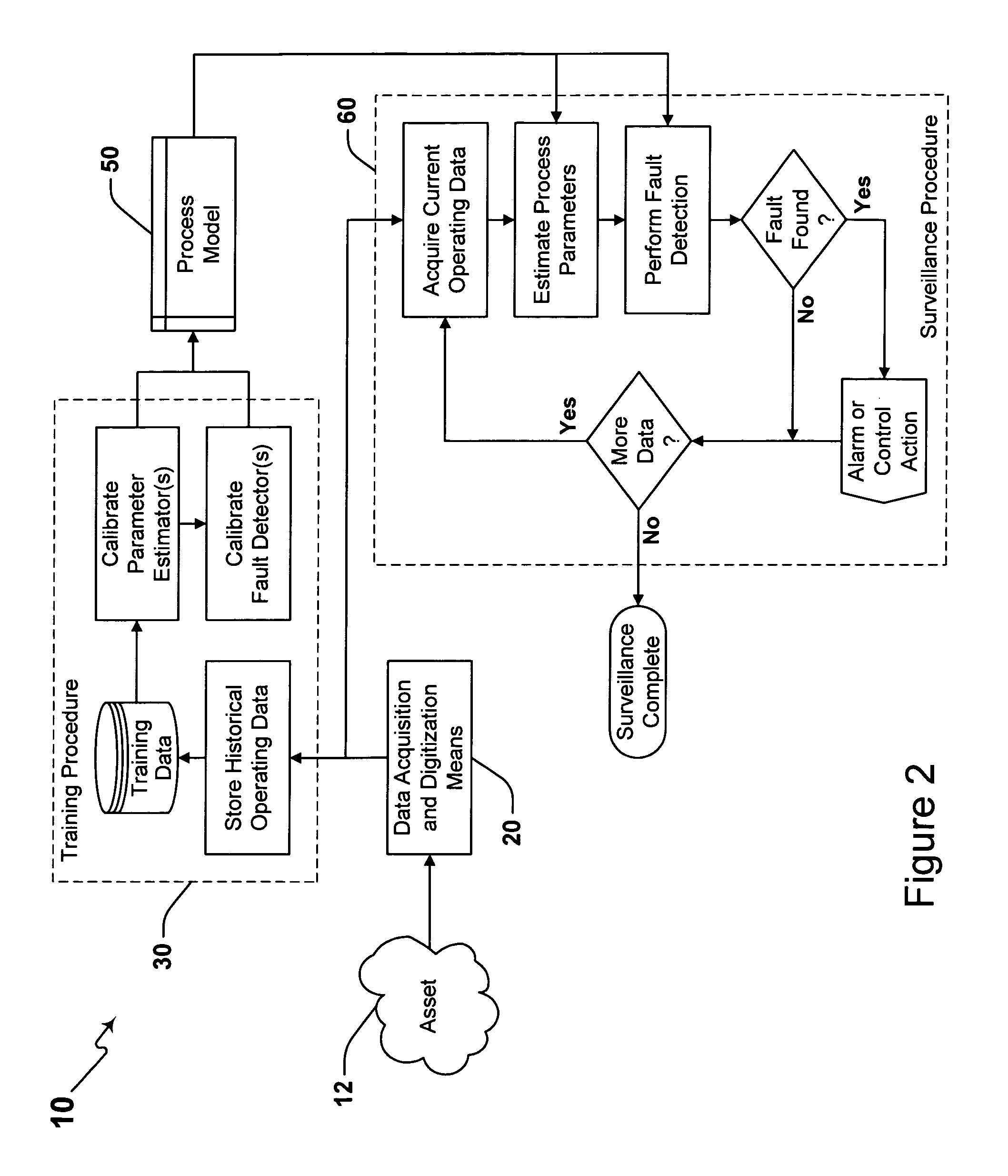Surveillance system and method having an adaptive sequential probability fault detection test
a technology of probability and detection test, which is applied in the direction of testing/monitoring control system, instruments, horology, etc., can solve the problems of large number of false alarms, the failure of conventional methods to account for the relationship between measurements made by one sensor relative, and the inability of conventional methods to perceive the onset of a process disturbance or sensor signal error, etc., to achieve lower false alarm rate, lower missed alarm rate, and higher decision accuracy
- Summary
- Abstract
- Description
- Claims
- Application Information
AI Technical Summary
Benefits of technology
Problems solved by technology
Method used
Image
Examples
Embodiment Construction
[0065]Considering the drawings, wherein like reference numerals denote like parts throughout the various drawing figures, reference numeral 10 is directed to the system according to the instant invention.
[0066]In its essence, and referring to FIGS. 1 and 2, the system 10 is generally comprised of a method and apparatus for performing high sensitivity surveillance of a wide variety of assets including industrial, utility, business, medical, transportation, financial, and biological processes and apparatuses wherein such process and / or apparatus asset preferably has at least one distinct measured or observed signal or sequence comprised of characteristic data values which are processed by the system 10 described herein for providing ultra-sensitive detection of the onset of sensor or data signal degradation, component performance degradation, and process operating anomalies. The system 10 includes a training procedure 30 carried out on a computer 22 such that a process model 50 of an ...
PUM
 Login to View More
Login to View More Abstract
Description
Claims
Application Information
 Login to View More
Login to View More - R&D
- Intellectual Property
- Life Sciences
- Materials
- Tech Scout
- Unparalleled Data Quality
- Higher Quality Content
- 60% Fewer Hallucinations
Browse by: Latest US Patents, China's latest patents, Technical Efficacy Thesaurus, Application Domain, Technology Topic, Popular Technical Reports.
© 2025 PatSnap. All rights reserved.Legal|Privacy policy|Modern Slavery Act Transparency Statement|Sitemap|About US| Contact US: help@patsnap.com



